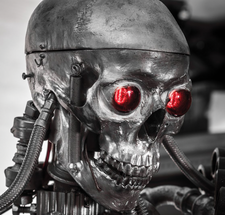Video surveillance with the Raspberry Pi
Eye in the Pi

© Lead Image © svedoliver, 123RF.com
Set up a professional video surveillance system armed with motionEyeOS and a Raspberry Pi.
Theft, vandalism, and property damage are commonplace occurrences today. Police investigations into such cases often come up empty, and the culprits escape undetected and unpunished. As a result, sales of video surveillance systems consisting of several cameras and a video recorder are booming. Here, I show you how, armed with just a Raspberry Pi and motionEyeOS, you can catch the culprits in the act.
Thanks to inexpensive IP and USB cameras, you can find numerous software packages for the home that can be used to upcycle a computer into a full-fledged video surveillance system. However, these solutions all have a serious disadvantage: They have to run constantly and require a correspondingly large amount of energy.
Professional surveillance cameras are bulky and usually attached by a cable to a control unit; just cutting the data cable will disable the camera. Video surveillance with the Raspberry Pi and the motionEyeOS [1] free operating system, on the other hand, is simple, less conspicuous, and less expensive.
[...]
Buy this article as PDF
(incl. VAT)
Buy Linux Magazine
Subscribe to our Linux Newsletters
Find Linux and Open Source Jobs
Subscribe to our ADMIN Newsletters
Support Our Work
Linux Magazine content is made possible with support from readers like you. Please consider contributing when you’ve found an article to be beneficial.

News
-
Akamai Will Host kernel.org
The organization dedicated to cloud-based solutions has agreed to host kernel.org to deliver long-term stability for the development team.
-
Linux Kernel 6.14 Released
The latest Linux kernel has arrived with extra Rust support and more.
-
EndeavorOS Mercury Neo Available
A new release from the EndeavorOS team ships with Plasma 6.3 and other goodies.
-
Fedora 42 Beta Has Arrived
The Fedora Project has announced the availability of the first beta release for version 42 of the open-source distribution.
-
Dash to Panel Maintainer Quits
Charles Gagnon has stepped away as maintainer of the popular Dash to Panel Gnome extension.
-
CIQ Releases Security-Hardened Version of Rocky Linux
If you're looking for an enterprise-grade Linux distribution that is hardened for business use, there's a new version of Rocky Linux that's sure to make you and your company happy.
-
Gnome’s Dash to Panel Extension Gets a Massive Update
If you're a fan of the Gnome Dash to Panel extension, you'll be thrilled to hear that a new version has been released with a dock mode.
-
Blender App Makes it to the Big Screen
The animated film "Flow" won the Oscar for Best Animated Feature at the 97th Academy Awards held on March 2, 2025 and Blender was a part of it.
-
Linux Mint Retools the Cinnamon App Launcher
The developers of Linux Mint are working on an improved Cinnamon App Launcher with a better, more accessible UI.
-
New Linux Tool for Security Issues
Seal Security is launching a new solution to automate fixing Linux vulnerabilities.

